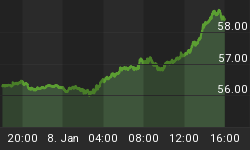In a recent memo to Oaktree Capital clients, Chairman Howard Marks writes about "the time I spent advising a sovereign wealth fund about how to organize for the next thirty years. My presentation was built significantly around my conviction that risk can't be quantified a priori. Another of their advisors, a professor from a business school north of New York, insisted it can. This is something I prefer not to debate, especially with people who're sure they have the answer but haven't bet much money on it."
This is an excellent illustration of the investment mind today. It treasures mathematical models that produce certainty. The finance professor is talking through his hat, but he need not fear an academic challenge. This is what the tenured teach and, alas, what students take to their jobs.
Businesses and investment funds are managed in the belief that risk - which is in the future (there is no risk to what has already happened) - can be captured down to the last dollar by a professor's model. A problem here, for those who have not spent time within this world, is they do not believe it. They cannot really accept that a highly acclaimed asset manager is confined - and generally, content to be confined - within the parameters as described.
Since it is difficult, if not impossible, to convince a sensible person this is really how institutional money decisions are made, the following question may help: "Do they - the professors, the CFOs, the investment managers, the Federal Reserve, for that matter, which is similarly attired - really believe they can know the future with such impossible precision, or, do they conduct their operations within such parameters because they want to believe they are authorities of the future?" The latter possibility is more believable.
Since this is the accepted method of managing businesses and funds, the allocation of resources and investments runs through the same pipe. When asset markets are flooded with artificial dollars, as is the case today, allocations rise (no one wants to be left out), fill the tank, spill in all directions, without regard for academic and central banking assurances, until they mock the gods. "All correlations go to one," wrote Marty Fridson, currently CIO at Lehmann, Livian, Fridson Advisors LLC.
Fridson made that statement about Long-Term Capital Management's mistaken models that engulfed world finance in 1998. Here we are, nearly 20 years later. That lesson has been ignored. World finance is far more leveraged and vulnerable than then. It is, to a degree, understandable why professors and central bankers are immune to reality. As Howard Marks wrote, they "haven't bet much money on it." That is not true for companies and investors.

The fact that the institutional world measures and applies risk incorrectly leaves corporate managers and investors vulnerable. The real risk, which was probably the first thought of the sensible person, is described by Howard Marks as a "permanent loss from which there won't be a rebound."
Yes. Finally, a statement that makes sense.
Marks offers his explanation for why academics (and the CFOs and CIOs they taught), are walking hand-in-hand to the graveyard: "Volatility is the academic's choice for defining and measuring risk. I think this is the case largely because volatility is quantifiable and thus usable in the calculations and models of modern finance theory. In [Marks' book, The Most Important Thing] I called it 'machinable.'" Our world loves machines to make decisions, or has given up fighting them.
The past two decades' APA (Asset Price Administration) has instilled an assumption in those who continue to run with the markets there is no such thing as a permanent loss. The S&P 500 fell 54% from 2007 to 2009. Today, it's higher than ever, and rising.
There are millions of Americans who have suffered permanent losses and will never recover. They bought the dot.com bubble, or a no-no-no mortgage, or had to sell their stocks in 2008 to make sure they could pay their bills. To rub their noses in the dirt, their interest rates have been confiscated on what savings may remain.
The risk of permanent loss is often called "tail risk." Joe Calandro and I have written about tail risk in the attached paper: ![]() "Investment, Corporate Risk Management, and Tail Risk." It was published in the July 2014 Gloom, Boom and Doom Report.
"Investment, Corporate Risk Management, and Tail Risk." It was published in the July 2014 Gloom, Boom and Doom Report.
Of infinitely greater importance, we describe how we manage a company's or fund's tail risk, which we are glad to discuss with potential customers.
Frederick Sheehan writes a blog at www.aucontrarian.com

















